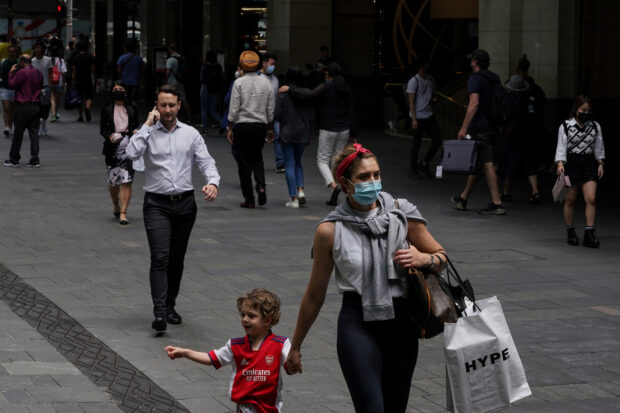
Pedestrians walk through a shopping plaza in the city center in Sydney, Australia, Nov 9, 2021. REUTERS/Loren Elliott/File photo
SYDNEY – Australian wages posted the largest increase on record last quarter as a sharp rise in minimum wages benefited millions of workers, while intense competition among employers also pushed up many individual pay deals.
Yet analysts noted this was largely due to a confluence of factors that were unlikely to be repeated, and markets still saw scant chance of a rate hike in response.
Figures from the Australian Bureau of Statistics out on Wednesday showed its wage price index rose 1.3 percent in the September quarter, matching forecasts and the biggest quarterly rise in the 26-year history of the series.
Annual pay growth picked up to 4 percent, from 3.6 percent, the highest since early 2009 and just above market expectations of 3.9 percent.
The acceleration was much as expected by the Reserve Bank of Australia (RBA), and one reason it raised interest rates last week to a 12-year top of 4.35 percent.
As a result, investors doubted that this report alone would trigger a further tightening and priced in just a 7-percent chance of a hike in December.
Analysts noted the September quarter was something of an aberration with a number of one-off factors.
Wage pressures
“Q3 was a perfect storm for wage pressures,” said Sean Langcake, head of macroeconomic forecasting for Oxford Economics Australia.
“High inflation is factoring into wage decisions as workers seek to keep up with cost of living pressures. A larger-than-usual increase in minimum and award wages also had a large impact.”
Much of the spike was due to a mandated 5.75-percent rise in the minimum wage which covers more than two million workers. There was also a one-off 15 percent pay rise for 250,000 workers in the aged care sector, and some public sectors saw pandemic-era pay caps removed in the quarter.
Wage growth in the public sector accelerated to a 12-year high of 3.5 percent, while the private sector saw growth of 4.2 percent as firms fought to recruit and retain workers.
Unemployment is still near 50-year lows at 3.6 percent and there are almost as many vacancies as there are jobless.
The RBA has said its own liaison with firms suggests competition for workers is finally cooling and it expects wage growth to ease over 2024.
More troubling for inflation has been a sharp increase in labor costs, due in part to a jump in hours worked, and a marked slowdown in productivity.
Policymakers have warned that productivity needs to recover to more normal levels, or inflation and interest rates might stay higher for longer.

